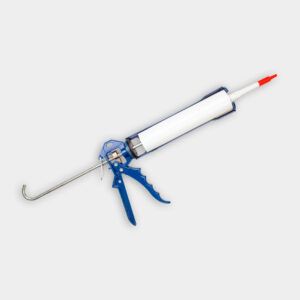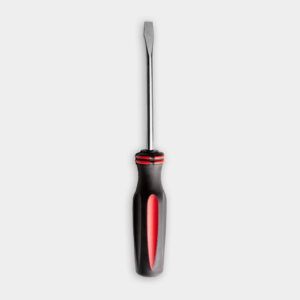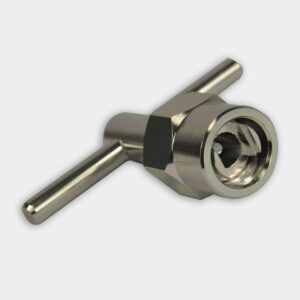We may be compensated if you purchase through links on our website. Our team is committed to delivering honest, objective, and independent reviews on home products and services.
A malfunctioning shower can quickly turn from a minor annoyance into a major inconvenience. One common culprit behind shower issues is a faulty cartridge. Replacing a shower cartridge is a task many homeowners can tackle with the right tools and guidance. This article will walk you through the process of identifying a bad cartridge, removing the old one, and installing a new one to restore your shower’s functionality. In the video above, This Old House plumbing and heating expert, Richard Trethewey, demonstrates how to replace a shower cartridge in a single-handle valve.
What Are Shower Cartridges?
Shower cartridges control the flow and temperature of shower water. Several shower cartridge styles are available, including single-handle cartridges, dual-handle cartridges, pressure-balancing cartridges, and thermostatic cartridges.
Over time, these cartridges can wear out, leading to various issues such as leaks, temperature inconsistencies, and reduced water pressure. Here are some common indicators of a faulty shower cartridge:
- Difficulty adjusting water temperature
- Dripping or leaking faucet when the shower is off
- Reduced water pressure
- Strange noises coming from the shower valve
- Sudden changes in water temperature during use
Noticing any of these signs likely means it’s time to replace your shower cartridge.
Removing the Old Shower Cartridge
Before you can replace your shower cartridge, you need to remove the old one. Removing the old cartridge requires attention to detail to avoid damaging other components of your shower.
First, locate the water shutoff valves for your shower. These are typically found near the shower or in the basement. If you can’t find dedicated shutoff valves, you’ll need to turn off the main water supply to your home. Failure to shut off the water supply can result in water damage and make the process much messier.
Gathering Tools
Before diving into the removal and replacement process, gather the following items:
- Cartridge puller (if necessary)
- Caulk gun and silicone caulk
- Flathead screwdriver
- Phillips head screwdriver
- Pliers
- Replacement cartridge
- Silicone grease
- Towels or rags
Accessing the Cartridge
To access the cartridge, do the following:
- Remove the shower handle by prying off the cover plate with a flathead screwdriver.
- Unscrew the screw behind the cover plate while holding the handle firmly.
- Remove the escutcheon plate by unscrewing it.
Extracting the Cartridge
To remove the cartridge, follow these steps:
- Locate the small clip holding the cartridge in place and carefully pry it up.
- Use a cartridge removal tool to work the old cartridge back and forth until it can be safely removed.
- Gently pull the cartridge out using pliers, being careful not to force it and potentially damage the valve.
Trethewey demonstrates how to use a special tool to twist the cartridge, breaking the seal that has formed over years of use. This technique can be particularly helpful for older cartridges that may be stuck in place.
Installing the New Shower Cartridge
With the old cartridge removed, it’s time to install the new one. Here’s how:
- Preparing the new cartridge: Apply a small amount of silicone grease to the O-rings on the new cartridge. Make sure the new cartridge is the correct model for your shower valve.
- Inserting the new cartridge: Carefully align the new cartridge with the valve body and gently push it into place, ensuring it’s fully seated. Replace the retaining clip to secure the cartridge.
- Reassembling the shower components: Apply a bead of silicone caulk around the back of the escutcheon plate for a watertight seal. Reattach the escutcheon plate and shower handle. Turn the water supply back on and test the shower for proper function.
Troubleshooting Common Shower Cartridge Issues
Leaks and temperature control problems may arise after your shower cartridge replacement.
If you notice leaks after installing the new cartridge, check that all connections are tight, ensure the cartridge is properly seated, and verify that the O-rings are intact and correctly positioned. Leaks can often be resolved by reseating the cartridge or tightening components that may have come loose during installation.
If you’re experiencing temperature control issues, make sure the cartridge is installed in the correct orientation. Also, check for any debris in the valve body that might be obstructing water flow. Confirm that the cartridge is compatible with your shower valve model.
Maintaining Your Shower Cartridge
Regular maintenance can extend the life of your shower cartridge and prevent future issues. Maintenance checks can help you catch early signs of wear and tear, allowing you to address issues before they become larger problems. Here are some tips for maintaining your shower cartridge:
- Avoid using harsh chemicals that can damage the cartridge.
- Clean your shower regularly to prevent mineral buildup.
- Consider having a professional inspection every few years.
- Periodically check for leaks or changes in water pressure.
Extending Cartridge Life
Taking extra steps to protect your cartridge can further extend its life. For instance, installing a water softener can help reduce mineral buildup. Additionally, regularly lubricating the O-rings with silicone grease can prevent them from drying out and cracking.
When To Call a Professional
While replacing a shower cartridge is a feasible DIY project, there are times when we would recommend calling a professional. If you encounter significant difficulty removing the old cartridge, have persistent leaks, or are uncertain about any step of the process, consult a licensed plumber. Professionals can ensure the job is done correctly and address any underlying issues that might not be immediately apparent.



